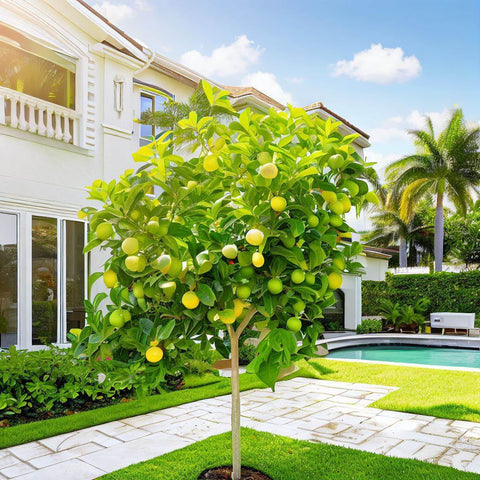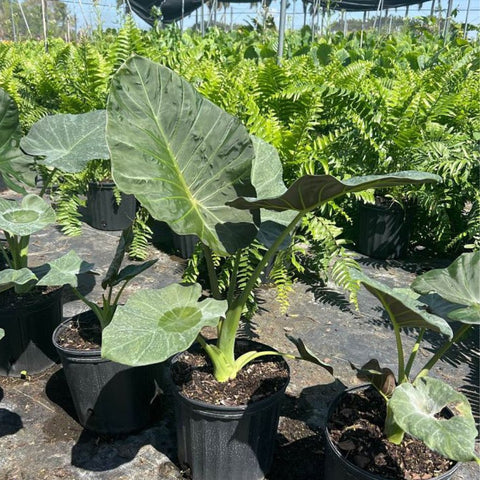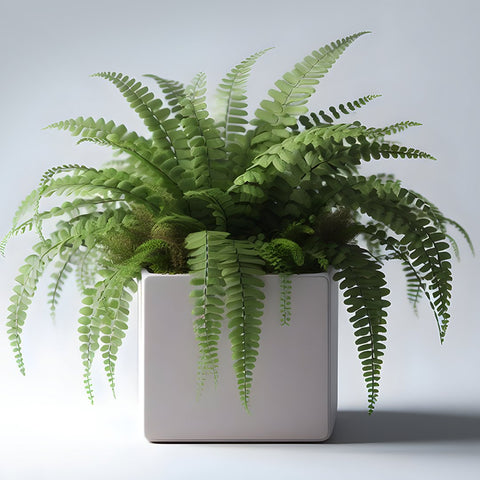Introduction
The Promise of a Weed-Free Spring Garden
Spring is a time of renewal and growth, a season where gardens wake from their winter slumber ready to burst into life. However, just as flowers, trees, and shrubs prepare to flourish, so too do weeds, the uninvited guests in our gardening party. Imagine walking through a perfectly manicured garden, where vibrant flowers aren’t just surviving but thriving, their colors popping against deep green, healthy foliage. This is the promise of a weed-free garden, an achievable goal with the right techniques and persistence. According to recent studies, active weed management can improve garden yield and plant health by up to 30%! Managing weeds in spring is fundamental because it sets the stage for the entire growing season, preventing the spread and dominance of these invasive plants.
Understanding Weeds: The Enemy in Your Garden
What Are Weeds?
Weeds are plants that are considered undesirable in certain situations, typically in places where they are aggressive, invasive, and competitive with desired plants. They often grow and spread quickly, overtaking gardens and stealing precious resources from more desired plants. Common types of weeds that you might find in your spring garden include:1. Dandelions
Recognizable by their bright yellow flowers and fluffy seed heads, dandelions are perennial weeds that thrive in sunny conditions.2. Chickweed
This winter annual is one of the earliest weeds in spring, with small white flowers and a tendency to spread quickly.3. Crabgrass
Prevalent in disturbed areas, this summer annual germinates in spring and spreads rapidly, forming clumps in gardens and lawns.Why Weeds Matter
Competition for Resources
Weeds compete directly with garden plants for water, light, nutrients, and space. This competition can stifle the growth of flowers, vegetables, and other garden mainstays. For example, a thriving plant's root system may not fully develop if a weed is consuming most of the soil’s nutrients. Weeds can also cast shadows over small plants, inhibiting their access to sunlight, which is crucial for photosynthesis, the process by which plants make energy to grow.
Strategies for Effective Weed Control
Prevention Techniques
Mulching
One of the most effective ways to prevent weeds is by mulching. Mulch blocks sunlight access to weeds and suppresses their growth. A layer of organic mulch, such as bark chips or straw, not only prevents weed seeds from germinating but also adds nutrients to the soil as it decomposes.Planting Density
Planting your garden densely reduces available space for weeds. By carefully planning the layout and ensuring plants are close enough to create shade, you can naturally prevent weed growth.Cover Crops
Using cover crops like clover or rye can significantly reduce weed populations. They compete with weeds for resources and cover the soil, further preventing weed seeds from germinating.Mechanical Methods
Hand-Pulling
For small gardens, hand-pulling is a traditional method that can be surprisingly effective when done correctly. It's best to pull weeds when the soil is moist, ensuring you remove the root system, which prevents them from growing back.Hoeing
Hoeing is suitable for larger gardens. Use a hoe to cut weeds off just below the soil surface. This method is most effective for annual weeds and should be repeated periodically throughout the growing season.
Chemical Controls
Herbicides
For those with larger infestations or perennial weeds, chemical herbicides might be necessary. Selective herbicides target broadleaf weeds without harming grass, while non-selective options kill any plant they contact. It’s crucial to read and follow the instructions for safe and effective use.Biological Control
Utilizing Beneficial Plants
Certain plants can suppress weed growth by outcompeting them for resources. For example, the Adonidia Palm from Plantology can serve as both an ornamental centerpiece and a weed suppressor in your garden. [Explore Adonidia Palm options here!](https://plantologyusa.com/products/adonidia-palm-double)Encouraging Beneficial Insects
Some insects, like the copper snail and certain beetles, feed on weed seeds, effectively reducing their ability to sprout.Incorporating Plantology Products for a Weed-Free Garden
Creating a Weed-Preventive Landscape
Using hardy plants that naturally suppress weeds is an excellent strategy for creating a low-maintenance garden. Consider integrating options like the [Aglaonema Silver Bay](https://plantologyusa.com/products/aglaonema-silver-bay-aglaonema-commutatum) for its dense foliage that shades out unwanted plants. This stylish plant doesn’t just offer aesthetic appeal; its broad leaves help smother any weeds trying to steal light beneath them.Best Plants for Companion Planting
The Role of Agave
Plants like [Agave Blue](https://plantologyusa.com/products/agave-blue) are perfect for arid climates and feature a robust root system that impedes weed competition. They serve as a weed control frontier by consuming water and nutrients that might otherwise feed weeds.
Ornamental Grasses and Palms
Grasses and palms such as the [Alexander Palm](https://plantologyusa.com/products/alexander-palm) create a canopy that obstructs weed growth, creating an elegant yet practical addition to any garden that values aesthetics and efficacy.Seasonal Timing and its Role in Weed Management
The Importance of Timing
Early Spring Planning
Spring is the most crucial period for catching weeds early in their lifecycle. By consistently monitoring and removing young weed sprouts, you can prevent them from seeding and multiplying.Late Spring Adjustments
Adjust your strategies based on the weed types present. Some might require ongoing removal efforts while others can be controlled with added mulch or new plant additions.Seasonal Consistent Application
Ensure your methods are applied consistently across the growing season. For example, reapplying mulch in midsummer can help strengthen the prevention of weed growth through to autumn.Conclusion
A weed-free garden is more than just visually appealing; it is a thriving ecosystem where each plant has room to grow and blossom. Understanding the nature and nurture of your garden through this guide empowers you to take on weeds with confidence and efficacy. At Plantology, we prioritize your garden’s health and offer plants that are not only beautiful but also functional in managing weeds. Check out our range to find the perfect plant for your garden’s unique requirements. Visit [Plantology today!](https://plantologyusa.com/) and let us help you create the garden of your dreams with the perfect combination of plants. Together, with proper techniques and the right plant selections from our carefully curated assortment, you can achieve a lush, weed-free garden every spring. Let us be a part of your gardening journey!
Exploring the Benefits of a Weed-Free Garden
Enhancing Plant Health
A weed-free garden allows your desired plants to fully access the resources they need to thrive. By removing competition, you positively impact plant health, ensuring vibrant, lush foliage and more productive blooming seasons. Research shows that plants have better root development and resource absorption in environments free from weed pressure. In essence, your plants get all the sunlight, water, and nutrients they need, leading to not only robustness but a possible increase in bloom times and yield.Boosting Biodiversity
With effective weed management strategies, you can focus on cultivating a diverse range of plant species. A diverse plant community enhances the ecosystem services your garden provides, such as improved pollination and increased resilience against pests and diseases. By reducing weed cover and prominence, your garden can support beneficial insects, pollinators like bees and butterflies, as well as a variety of bird species that may contribute to natural pest control.Improving Aesthetic Appeal
A garden free from weeds is aesthetically pleasing. Clear, tidy flower beds and borders allow your chosen plants to be the stars of the show, providing a manicured look that enhances outdoor spaces and contributes significantly to the curb appeal of your home. Visual harmony is much easier to achieve without the disarray that weeds often bring.Case Studies in Weed Management and Plant Selection
Case Study 1: Community Garden Success
In a community garden located in the heart of an urban area, a strategic approach to weed management was implemented by using mulching and dense planting techniques. Volunteers applied organic mulch layers across the garden beds and increased plant density through the use of companion planting. Resultantly, the communal garden saw a 60% reduction in weed growth and a noticeable improvement in vegetable yields. Notably, the inclusion of Plantology’s [Adonidia Palm](https://plantologyusa.com/products/adonidia-palm-double) provided both an ornamental touch and effectiveness in reducing weed spread through shading.
Case Study 2: Flowers in Harmony
A case study from a residential owner who adopted Plantology’s product recommendations showcases a beautiful tapestry of color and life. By incorporating the [Aglaonema Silver Bay](https://plantologyusa.com/products/aglaonema-silver-bay-aglaonema-commutatum) alongside ornamental grasses and palms, the homeowner created a space that not only reduced the occurrence of weeds but increased butterfly visits by 40%. This successful strategy underlines the potential of mixing aesthetically significant plant varieties with known weed suppressors, ensuring the site is both functional and joyful to observe.Case Study 3: Sustainable Practices in School Gardens
At a local school, teachers and students worked together to eliminate a longstanding problem of crabgrass overtaking their educational garden. Through the use of cover crops like clover and the introduction of biological controls using beneficial insects, they created a vibrant learning environment lush with educational value. Students and staff noted the garden was easier to maintain, and as a bonus, pest-related issues also decreased, suggesting that their concerted efforts to discourage weeds paid dividends in several ways including the overall health of their crops.Advanced Tips for Weed Management
Implementing Smart Irrigation Practices
Water your garden wisely to prevent giving weeds an edge. Drip irrigation is an excellent choice to deliver moisture directly to plant roots, reducing water waste and keeping weed-prone areas dry. This strategy minimizes the likelihood of weed germination and is especially valuable during dry seasons where every drop counts.Embracing No-Till Gardening
While tilling is traditionally seen as a way to prepare soil, it can unintentionally bring weed seeds to the surface, fostering their growth. Consider a no-till approach where possible, which maintains soil structure and limits the disturbance of weed seeds. This technique, combined with the use of cover crops, can support a more robust ecosystem and foster healthy soil biology.
Customizing Herbicide Use
If herbicides are necessary, select products based on the specific weed problem you’re facing. Identifying whether you need a pre-emergent or post-emergent herbicide is critical. Pre-emergents target seeds before they germinate, while post-emergents are for active weeds. Always apply herbicides while considering the environmental conditions and weather forecasts to avoid run-off and unintended damage to non-target plants.Incorporating Traditional Wisdom with Modern Techniques
Gardening methods evolve, but sometimes, looking back to traditional wisdom can offer solutions that complement modern practices. Companion planting, for instance, has been used for centuries. By choosing plants that naturally protect each other against pests and weeds, you can enjoy a harmonious and productive garden. Learn from indigenous agriculture where intercropping is practiced to maximize land use and reduce the invasion of unwanted plant species. Combine this with the accessibility of modern plant choices from Plantology to tailor a botanical layout that speaks to both efficiency and aesthetic value.Conclusion
Envision your garden as a serene and productive landscape where each plant plays a vital role, thriving free from the competition of weeds. Through a combination of preventative strategies, mechanical methods, and thoughtful plant selections, you can create a vibrant space where beauty and biodiversity coalesce. At Plantology, we bring you plant solutions that encompass ornamental grace and practical functionality.






























Comments (0)
There are no comments for this article. Be the first one to leave a message!